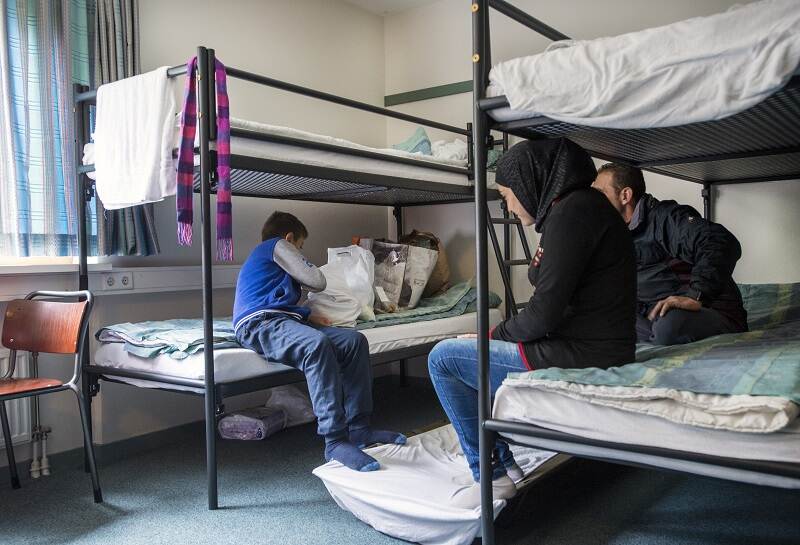Budget for asylum reception structurally too low
Reception capacity for asylum seekers in a multiyear perspective
In 2022 the Dutch government budgeted just over €500 million for the Central Agency for the Reception of Asylum Seekers (COA). In the course of the year, however, it became clear that the COA would need an additional billion euros because the number of asylum seekers and the costs incurred for them were far higher than foreseen. This is not the first time the Netherlands has had problems with the reception of asylum seekers. The COA’s costs have been higher than budgeted in 21 of 23 years investigated by the Netherlands Court of Audit. Why is this? An investigation by the Court places the current reception problems in a multiyear perspective.

The Court of Audit previously audited asylum policy in 1995. In the audit report, we wrote, ‘The structural shortage of capacity is due to the number of asylum seekers to be received [and] the length of the procedure. […] As a result, permanent use has to be made of a varying number of emergency reception locations.’ Our investigation found that the same problems were still occurring today, 28 years later. But the current crisis is also being fuelled by a number of new problems.
Budget for asylum reception structurally too low
The budget for asylum reception has been too low in 21 of the past 23 years (see figure below). The Ministry of Justice and Security (J&V) estimates the budget on the basis of the expected number of asylum seekers in February, a year in advance. Its estimate, however, is often overtaken by events. In addition, the amount the state secretary actually reserves is frequently lower than the estimated budget. The amount available is determined by the ministry’s budgetary framework, not the COA’s needs. As a result, the COA often has to work in crisis mode.
Budget was too low in 21 of the past 23 years

Upscaling and downscaling reception capacity costs money
If the number of asylum seekers increases and all reception places are filled, the COA must arrange new reception locations. If the number falls, those hard-won reception locations have to be closed. The COA constantly has to upscale and downscale its capacity. Crisis and emergency places have to be found during crises. These places are often of lower quality and more expensive than regular places. Besides the financial cost, constantly upscaling and downscaling is a source of social unrest, especially in the municipalities where the COA is looking for new locations.
The State Secretary for J&V and the COA do not have an insight into how much upscaling and downscaling costs. The COA says this is because its accounting system is not designed to monitor costs.
New problems in the current crisis
The pressure on reception capacity is due not only to the high inflow of asylum seekers but also to the low outflow of asylum seekers who are entitled to housing. Capacity has been under pressure for some time and it is more difficult to scale it up than it was in the previous crisis (in 2015/2016). This is due to the following factors:
Tight housing and labour markets
The housing shortage is forcing status holders (people who have been issued a residence permit and are entitled to housing) to stay longer in the COA’s centres. In 2022, about a third of all its places were occupied by status holders. Furthermore, lack of staff reduces the ability to open new reception locations and increases the time needed by the Immigration and Naturalisation Service to process asylum applications.
Municipalities reluctant to open reception locations
The COA says municipalities are becoming more reluctant to open reception locations. When they do agree to open a location, they prefer short-term contracts and smaller locations. The State Secretary for J&V is drafting a bill that will require municipalities to provide reception capacity. At the time of publication, it was not clear whether or how the bill would take effect.
Crowding out by displaced Ukrainians
Several municipalities said they did not have enough capacity to house both asylum seekers and displaced Ukrainians.
Government unable to change the system
The previous and the current government have been calling for some time for more stable and flexible asylum reception. The most recent attempt was made by the National Coordination Meeting on Migration and Integration in the Implementation Agenda for a Flexible Asylum Chain (signed in 2020). Its ambition was to avoid the use of emergency reception wherever possible. At present, however, emergency capacity is being used on a large scale (alongside regular capacity). The State Secretary for J&V does not expect the current asylum crisis to end in the near future. To date, the 28-year-old debate on a more stable and flexible system has not led to structural change or prevented the repetition of the problems.